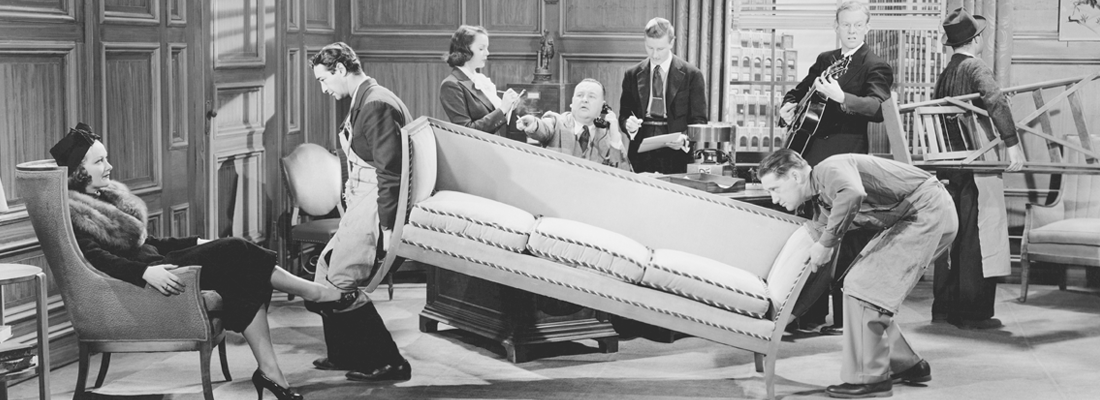
Reading time: 6 Minutes
It really is the little things that can make all the difference in an office environment. Twitter’s Bruce Daisley reckons that it could be as simple as investing in a few comfy chairs – or laughing together more. Loulla-Mae Eleftheriou-Smith reports
Gone are the days when a ‘dream job’ was defined solely by how much money it paid. Today, savvy workers are demanding more from their nine-to-six, with the emphasis on job satisfaction rather than a huge pay cheque. In fact, in IWG’s recent global workplace study of 18,000 professionals, 80 per cent of respondents said that enabling their company’s employees to work from anywhere helped them recruit and retain top talent.
Of course, work will always be work – that’s why we get paid to do it. But how can we go about turning it into something we love? Bruce Daisley, European VP at Twitter and host of successful business podcast, Eat Sleep Work Repeat, has the answer. While researching his latest book, The Joy of Work, he discovered a few simple ways that can help almost anyone to love what they do.
1. Move the coffee machine
Research shows that regular, positive interactions with our colleagues is a key way to boost job satisfaction. “So we should all be looking at ways to increase the frequency of these,” says Daisley. “The position of a team focal point, such as a coffee machine or a sofa, can strongly influence how people work together, so moving it can have an instant positive impact on your team’s team dynamics.”
If your coffee machine is hard to move, the principle can be applied to other parts of office life. Daisley’s favourite example is a company that introduced ‘snack Thursday’. Once a week, the receptionist laid out a selection of nibbles on a communal table and everyone in the office gathered around and chatted for around 15 minutes.
They would then return to their desks – but after they had created connections with one another. “If you talk to someone socially in the office, you’re more confident about talking to them for work reasons in the subsequent week,” Daisley says.
“It might feel silly to suggest a ‘snack meeting’ or moving the kettle, but the whole point of offices is to get people talking together and producing more than the sum of the parts, and these little interventions have a measurable impact.”
2. Have a ‘monk mode’ morning
Not only are happy employees more productive, but productive employees are happier, too. However, being productive and getting through your to-do list is not always easy in an office environment. “That’s why you need to embrace ‘monk mode’,” argues Daisley.
The intention of a monk mode morning is to plan 90 minutes of uninterrupted time at the start of the day once or twice a week to focus on work. No phones, no meetings, no email and, if possible, no people.
Both Greg McKeown, a leadership business consultant who wrote Essentialism, and Cal Newport, a computer science professor at Georgetown University, author of Deep Work, have espoused the benefits of going into monk mode to try and get quality work done.

“According to Newport, we live in an era where there are so many interruptions, it’s no surprise it takes four hours to get a document done, because you’re doing two minutes and then getting interrupted,” says Daisley. “To take satisfaction in our work, we need to reach a stage where we’re getting blocks of concentrated work done.”
Daisley appreciates that not everyone will have jobs (or bosses) that will allow this, but says it’s worth trying to find a way to create 90 minutes of time for yourself that are completely distraction-free.
3. Take regular breaks
It can often feel hard to justify taking a proper break when work is full-on but, in the long run, it’s these periods away from work that make us more productive, healthy and satisfied.
In a study of exam-taking students, researchers discovered that those who’d been allowed to take a break achieved results that were ten per cent higher than those who hadn’t. The research, published in the Proceedings of National Academy of Sciences, found that the optimum time for a break was 20 to 30 minutes, and that the impact was not only in accuracy but also creativity and recall.
Daisley suggests experimenting with taking breaks, either by using a tea break to walk to a coffee shop, or to wander to a kettle on a different floor of the office. Taking a power nap or meditating are also options. And while it may feel counterintuitive, he also suggests “taking time out at the moment when you feel least able to step away from things.” He adds: “Some people report that breaks seem to work most effectively at moments of stress and exhaustion.”
4. Take time to laugh
One clear sign of a workplace filled with satisfied employees is the sound of joyful laughter. Not only can a moment of merriment cut through tension or help ease stressful situations in an office, its effects on employee morale can be quite primal, too.
Daisley has a distinct memory of being caught by a boss having a laugh with a colleague while the company was going through a rough patch. The boss turned to him and said: “It’s not a good time to be seen laughing.”
Daisley, however, believes in the power of joie de vivre at work, and cites evolutionary psychologist and anthropologist Robin Dunbar’s findings about bonding. “When animals groom each other they are bonding, and they experience huge surges in endorphin levels,” says Daisley. “Now, while we wouldn’t groom each other at work, laughter can serve the same purpose. It makes us connect with each other, releases endorphins and is incredibly good at triggering our creative mind.”
He suggests allowing a place for good humour and liveliness in meetings, with social meetings being the most obvious setting, but he reminds us there is also space for laughter in larger meetings where someone is giving a leaving speech or celebrating a milestone. It’s worth also celebrating the people in a team who are funny, Daisley says, while remembering that companionable laughter isn’t something that should be reserved solely for the office. It is the best medicine, after all.
5. Admit when you’re wrong
Even the ‘perfect job’ doesn’t go perfectly all the time. The secret is in how you handle the rough parts, says Daisley.
“No one likes making mistakes, let alone admitting when it happens,” he explains. “And, in deadline-driven environments, messing up can often be seen as time wasted instead of a potential learning experience. But making mistakes is entirely human and admitting to them can actually build trust in teams.”
Daisley points to Harvard Business School professor Amy Edmondson’s research into what she calls ‘psychological safety’. She studied the best performing medical teams, expecting them to make fewer mistakes than badly performing teams, but found that instead they made more. Or, at least, they recorded more mistakes, as the teams had an open environment that allowed them to discuss errors.
“The best teams had a climate where there was a sense of trust and collaboration where people weren’t ashamed to say they made a mistake,” explains Daisley. “Edmondson said that willingness to admit when you’re wrong is an important part of building a trusted environment.
6. Request a chill-out space
As we spend the majority of our days in our workplaces, being able to offer an attractive office with practical amenities to aid employees throughout their days – such as a chill-out space – can be a major plus point for members of staff and significantly improve staff retention. These can be places to relax, recharge, nap or even meditate.
A survey by Dale Office Interiors found that more than a third of Millennials said having a chill-out zone would be the most important design aspect to them when working in an office, more than having access to exercise or recreational facilities.
Daisley has seen more and more offices trying to create a “mixed economy” of quiet zones, desk spaces and social areas, with some even having a mindfulness zone, which can be especially helpful in stressful working environments.
He even found one police station in the United Kingdom that had implemented a mindfulness zone. “It hadn’t been created by the bosses saying ‘you need this’, but by a few of the police officers asking for a room to be set aside for this purpose.”
Loulla-Mae Eleftheriou-Smith is UK-based journalist who writes for The Independent, The Huffington Post and others

Running your business from home doesn’t always make sense. Find out how Regus flexible office space can fit into your plans for a happier work life


